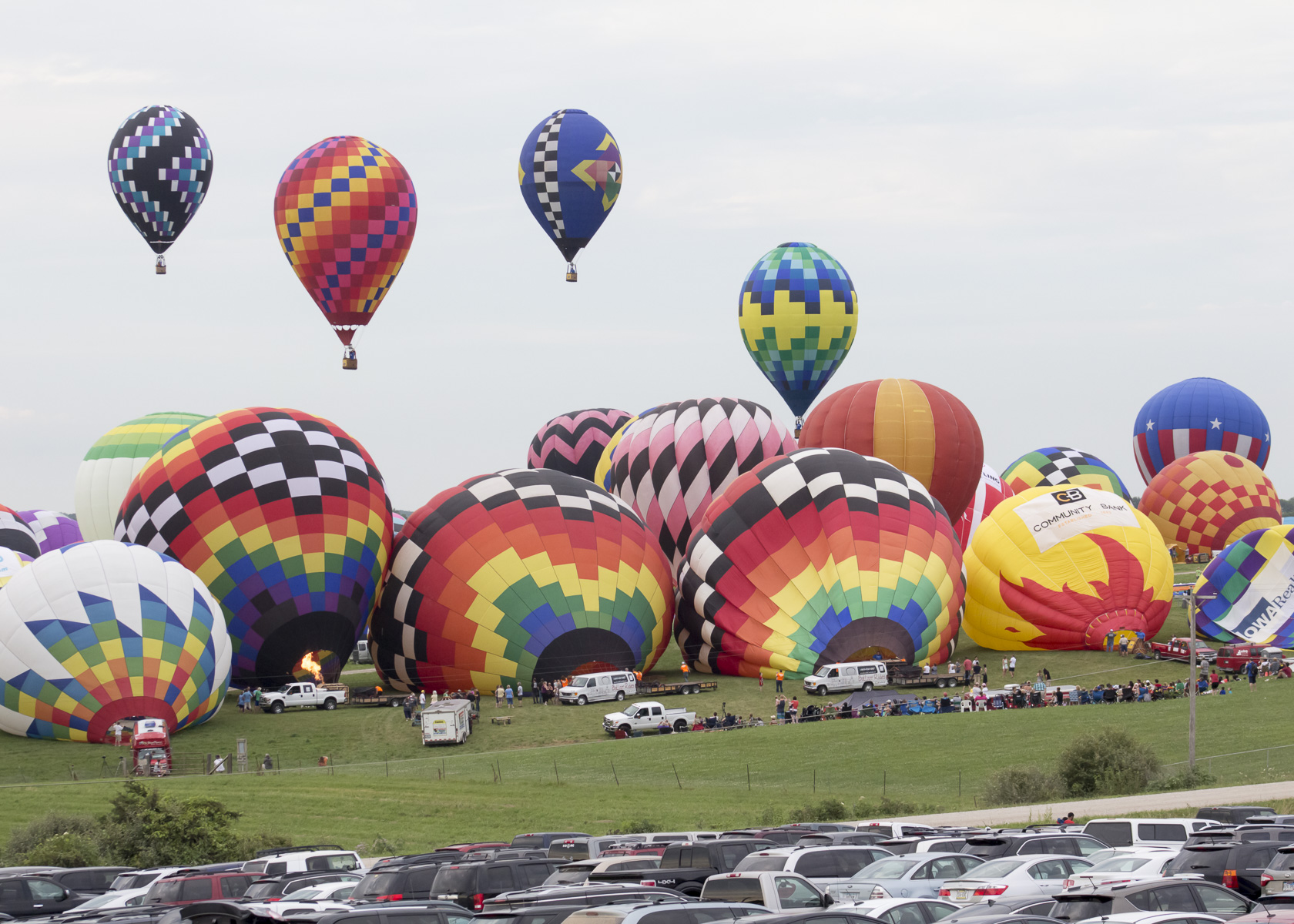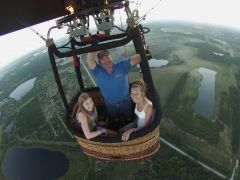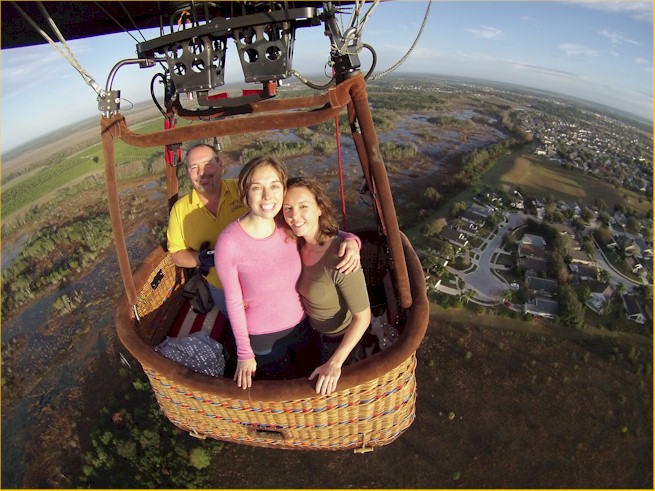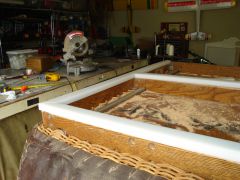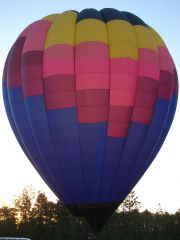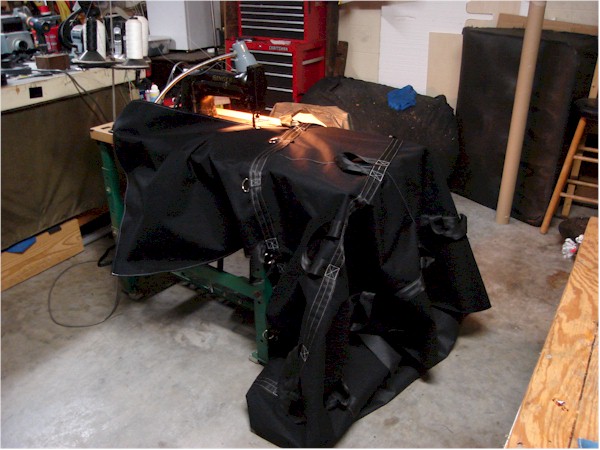-
Posts
3,432 -
Joined
-
Last visited
-
Days Won
57
Content Type
Profiles
Forums
Members Articles
Store
Events
Downloads
Gallery
Blogs
Community Map
Everything posted by hotairballoonist
-
From the album: Thompson Aire
-
From the album: Thompson Aire
Flying over the Florida Swamp -
-
Here is what I am using. These are the items you will need for your own gopro for inflight video. Two of these. http://www.amazon.co...0?ie=UTF8&psc=1 One of these. http://www.amazon.co...0?ie=UTF8&psc=1 One of these. http://www.amazon.co...0?ie=UTF8&psc=1 And the camera. http://www.amazon.co...1?ie=UTF8&psc=1 and a smart card with adaptor. http://www.amazon.co...ds=sd card mini Total.. $325.87 You can download the program for the GoPro on your iPhone or iPad for free. You can also get a ram mount for the iPad or iPhone that will work on the balloons. I have a ball mounted on all the baskets we fly and Kim and I now fly with the iPad on every flight. I use two of the sinch straps to hold the pole on the frame of the basket. Here is what a photo looks like with this set up. Notice that you do not see the pole. Here is a link to a video done with this set up. http://hotairballoon...loon-rides-r46 Here are some close up photos of how it is hooked to the basket. Notice that the telescoping pole is located on TOP of the basket frame so it does not interfear with the gimbal of the balloon burner. It also stays clear of the envelope supension lines. It provides a great angle on the basket in flight. One of the nice features of the Hero 3 go pro is that they can be operated remotly with a smart phone or iPad. We fly with an Ipad on board so using the camera is easy. Just a touch of a few buttons on the ipad. I am not by any means saying that this is the best mount there is but it sure does work well for me. Here is a link to a few of the videos I have done with the camera. I use Windows Movie Maker for editing. It is a simple program and easy to use. Here is where you can go and download Windows Live Movie Maker All the best and have fun Jeff
-
13 downloads
NATIONAL AERONAUTICS AND SPACE ADMINISTRATION NASA has established an Aviation Safety Reporting System (ASRS) to identify issues in the aviation system which need to be addressed. The program of which this system is a part is described in detail in FAA Advisory Circular 00-46D. Your assistance in informing us about such issues is essential to the success of the program. Please fill out this form as completely as possible, enclose in an sealed envelope,Free -
http://hotairballoonist.com/forum/index.php?/files/file/50-%7B?%7D/ So what do I have to do? I have created a site that has a thousand things to offer to the world of ballooning. Sales, Blogs, photo galleies, member information, contact information, maps, festivals, The list goes on and on... And yet trying to get people to become members is like pulling teeth. If a ride operator sells just one ride a year they have paid for thier membership. Balloon festivals can upload all thier documents and save the entire cost of membership in postage alone and that does not count labor! and on and on..... I have built something that anyone would call impressive...... Imagine what I can do if I had some financial support from members???? Join today. It's cheap. Get your friends to join and your crew to join and you mother. Help me make this thing into the best resource for ballooning on the web.
-
-
From the album: Repairs
-
From the album: Repairs
-
From the album: Repairs
-
-
-
-
Here is a great link to a website where you can observe lightning strikes on a national or local level. Lightning Radar
-
Early years Jacques-Étienne Montgolfier Born 6 January 1745 Annonay, Ardèche, France Died 2 August 1799 (aged 54) Neuchâtel, Switzerland Occupation inventor The brothers were born into a family of paper manufacturers in Annonay, in Ardèche, France. Their parents were Pierre Montgolfier (1700–1793) and his wife, Anne Duret (1701–1760), who had sixteen children. Pierre established his eldest son, Raymond Montgolfier, later Raymond de Montgolfier (1730–1772), as his successor. Joseph, the 12th child, possessed a typical inventor's temperament—a maverick and dreamer, and impractical in terms of business and personal affairs. Étienne had a much more even and businesslike temperament. As the 15th child, and particularly troublesome to his elder siblings, he was sent to Paris to train as an architect. However, after the sudden and unexpected death of Raymond in 1772, he was recalled to Annonay to run the family business. In the subsequent 10 years, Étienne applied his talent for technical innovation to the family business; paper making was a high-tech industry in the 18th century. He succeeded in incorporating the latest Dutch innovations of the day into the family mills. His work led to recognition by the government of France as well as the awarding of a government grant to establish the Montgolfier factory as a model for other French paper makers. Early experimentsOf the two brothers, it was Joseph who first contemplated building machines as early as 1777 when he observed laundry drying over a fire incidentally form pockets that billowed upwards.[3] Joseph made his first definitive experiments in November 1782 while living in the city of Avignon. He reported some years later that he was watching a fire one evening while contemplating one of the great military issues of the day—an assault on the fortress of Gibraltar, which had proved impregnable from both sea and land.[4] Joseph mused on the possibility of an air assault using troops lifted by the same force that was lifting the embers from the fire. He believed that contained within the smoke was a special gas, which he called Montgolfier Gas, with a special property he called levity. As a result of these musings, Joseph set about building a box-like chamber 1×1×1.3 m (3 ft by 3 ft (0.91 m) by 4 ft) out of very thin wood, and covering the sides and top with lightweight taffeta cloth. He crumpled and lit some paper under the bottom of the box. The contraption quickly lifted off its stand and collided with the ceiling. Joseph then recruited his brother to balloon building by writing, "Get in a supply of taffeta and of cordage, quickly, and you will see one of the most astonishing sights in the world." The two brothers then set about building a similar device, scaled up by three (so 27 times greater in volume). The lifting force was so great that they lost control of their craft on its very first test flight on 14 December 1782. The device floated nearly two kilometers (about 1.2 mi). It was destroyed after landing by the "indiscretion" of passersby.[5] Public demonstrations First public demonstration in Annonay, 4 June 1783 The brothers decided to make a public demonstration of a balloon in order to establish their claim to its invention. They constructed a globe-shaped balloon of sackcloth with three thin layers of paper inside. The envelope could contain nearly 790 m³ (28,000 cubic feet) of air and weighed 225 kg (500 lb). It was constructed of four pieces (the dome and three lateral bands) and held together by 1,800 buttons. A reinforcing fish net of cord covered the outside of the envelope. On 5 June 1783, they flew this craft as their first public demonstration at Annonay in front of a group of dignitaries from the États particuliers. Its flight covered 2 km (1.2 mi), lasted 10 minutes, and had an estimated altitude of 1,600-2,000 m (5,200-6,600 ft). Word of their success quickly reached Paris. Étienne went to the capital to make further demonstrations and to solidify the brothers' claim to the invention of flight. Joseph, given his unkempt appearance and shyness, remained with the family. Étienne was the epitome of sober virtues ... modest in clothes and manner...[6] A model of the Montgolfier brothers' balloon at the London Science Museum In collaboration with the successful wallpaper manufacturer Jean-Baptiste Réveillon, Étienne constructed a 37,500-cubic-foot (1,060 m3) envelope of taffeta coated with a varnish of alum (which has fireproofing properties). The balloon was sky blue and decorated with golden flourishes, signs of the zodiac, and suns. The design showed the intervention of Réveillon. The next test was on the 11th of September from the grounds of la Folie Titon, close to Réveillon's house. There was some concern about the effects of flight into the upper atmosphere on living creatures. The king proposed to launch two criminals, but it is most likely that the inventors decided to send a sheep, a duck, and a rooster aloft first. On the 19th of September 1783, the Aérostat Réveillon was flown with the first living beings in a basket attached to the balloon: a sheep called Montauciel ("Climb-to-the-sky"), a duck and a rooster. The sheep was believed to have a reasonable approximation of human physiology. The duck was expected to be unharmed by being lifted aloft. It was included as a control for effects created by the aircraft rather than the altitude. The rooster was included as a further control as it was a bird that did not fly at high altitudes. This demonstration was performed before a crowd at the royal palace in Versailles, before King Louis XVI of France and Queen Marie Antoinette.[7] The flight lasted approximately eight minutes, covered two miles (3 km), and obtained an altitude of about 1,500 feet (460 m). The craft landed safely after flying. Manned flight A 1786 depiction of the Montgolfier brothers' historic balloon with engineering data. Details are available in translation on the image hosting page. With the successful demonstration at Versailles, and again in collaboration with Réveillon, Étienne started construction of a 60,000-cubic-foot (1,700 m3) balloon for the purpose of making flights with humans. The balloon was about seventy-five feet tall and about fifty feet in diameter. It had rich decorative touches supplied by Réveillon. The color scheme was gold figures on a deep blue background. Fleur-de-lis, signs of the zodiac, and suns with Louis XVI's face in the center interlaced with the royal monogram in the central section graced the majestic machine. Red and blue drapery and golden eagles were at the base of the balloon. It is fitting that Étienne Montgolfier was the first human to lift off the earth, making at least one tethered flight from the yard of the Réveillon workshop in the Faubourg Saint-Antoine. It was most likely on October 15, 1783. A little while later on that same day, Pilâtre de Rozier became the second to ascend into the air, to an altitude of 80 feet (24 m), which was the length of the tether.[1][2] On 21 November 1783, the first free flight by humans was made by Pilâtre, together with an army officer, the marquis d'Arlandes.[8] The flight began from the grounds of the Château de la Muette (close to the Bois de Boulogne (park)) in the western outskirts of Paris. They flew aloft about 3,000 feet (910 m) above Paris for a distance of nine kilometers. After 25 minutes, the machine landed between the windmills, outside the city ramparts, on the Butte-aux-Cailles. Enough fuel remained on board at the end of the flight to have allowed the balloon to fly four to five times as far. However, burning embers from the fire were scorching the balloon fabric and had to be daubed out with sponges. As it appeared it could destroy the balloon, Pilâtre took off his coat to stop the fire. The early flights made a sensation. Numerous engravings commemorated the events. Chairs were designed with balloon backs, and mantel clocks were produced in enamel and gilt-bronze replicas set with a dial in the balloon. One could buy crockery decorated with naive pictures of balloons. In early 1784 the Flesselles balloon (named after the unfortunate Jacques de Flesselles, later to be an early casualty at the Bastille) gave a rough landing to its passengers. In June 1784 the Gustave saw the first (singing) female aeronaut, Élisabeth Thible. Following launches Manuscript of Montgolfier describing his invention, 1784 In 1766, the British scientist Henry Cavendish had discovered hydrogen, by adding sulphuric acid to iron, tin, or zinc shavings. The development of gas balloons proceeded almost in parallel with the work of the Montgolfiers. This work was led by Jacques Charles and les Frères Robert (Anne-Jean Robert, and Nicolas-Louis Robert). On 27 August 1783, their hydrogen balloon was launched from the Champ de Mars in Paris. Six thousand people paid for a seat. On 1 December Jacques Charles and Nicolas-Louis Robert flew La Charlière, the first manned hydrogen balloon, for 2 hours 5 minutes and covered 36 km. Jacques Charles immediately flew again, alone, and ascended to 3,000 meters. Work on each type of balloon was spurred on by the knowledge that there was a competing group and alternative technology. For a variety of reasons, including the fact that the French government chose to put a proponent of hydrogen in charge of balloon development[who?], interest in hot air balloons was largely superseded by gas balloons over the following decades.[citation needed] Hydrogen balloons were used for all subsequent major ballooning accomplishments, such as the crossing of the English Channel on 7 January 1785 by the Franco-American aviators Jean-Pierre Blanchard and Dr. John Jeffries. In recent times many aviation endurance records have been achieved by hybrid balloon designs such as the Rozière Balloon; which combine the altitude control of hot air balloons with the permanent buoyancy of lifting gases. Competing claimsSome claim that the hot air balloon was invented some 74 years earlier by the Brazilian/ Portuguese priest Bartolomeu de Gusmão.[9] A description of his invention was published in 1709 in Vienna, and another one that was lost was found in the Vatican in about 1917.[10] However, this claim is not generally recognized by aviation historians outside the Portuguese-speaking community, in particular the Fédération Aéronautique Internationale. The Montgolfier companyThe Montgolfier Company still exists in Annonay (Ardèche, France). In 1799, Etienne de Montgolfier died. His son-in-law, Barthélémy Barou de la Lombardière de Canson (1774–1859), succeeded him as the head of the company, thanks to his marriage with Alexandrine de Montgolfier. The company became "Montgolfier et Canson" in 1801, then "Canson-Montgolfier" in 1807. Nowadays, Canson still produces fine art papers, school drawing papers and digital fine art and photography papers and is sold in 120 countries.
-
Ok. Here is an update. It does not work on an iPad.
-
This is a cool site. I will have to test it out when we get our heavy boomers here in florida and see how good and up to date it is. I will make more comments soon. http://www.fullscreenradar.com/
-
New update about member map. The member map is up and running but the database we had attached is unable to connect currently. As a member you can put a pin in the map to show your location. The custom markers we had for ride operations and balloon festivals and other items are no longer visible on the map but should be able to post them in a future upgrade of the member map module. In the mean time log in and post your location on the map. Jeff
-
Seasonal pilot needed for our passenger flight business in the Smoky Mountain area of Tennessee. Our company was established in 1983. This is a salaried position, plus lodging. Please reply with CV for more information. Jeff Lansdown Smoky Mountain Balloon Adventures Www.smokymtnballoons.com 865-622-1394
-
- Pilot wanted
- Pilot Job
-
(and 1 more)
Tagged with:
-
We were flying along when one of my passengers made several looks at her watch. I asked her if she needed to be somewhere at a specific time? She said with a straight face. "No but isn't it time for us to turn around and head back?" With my best straight face I replied... "I was thinking the same thing but my ground team is just up ahead a few miles. If I turn around now I am going to have to make them drive all the way back as well so I think we will just land up here where they are." She was perfectly happy with that answer. My back up answer was, "My reverse is broke!"
-


